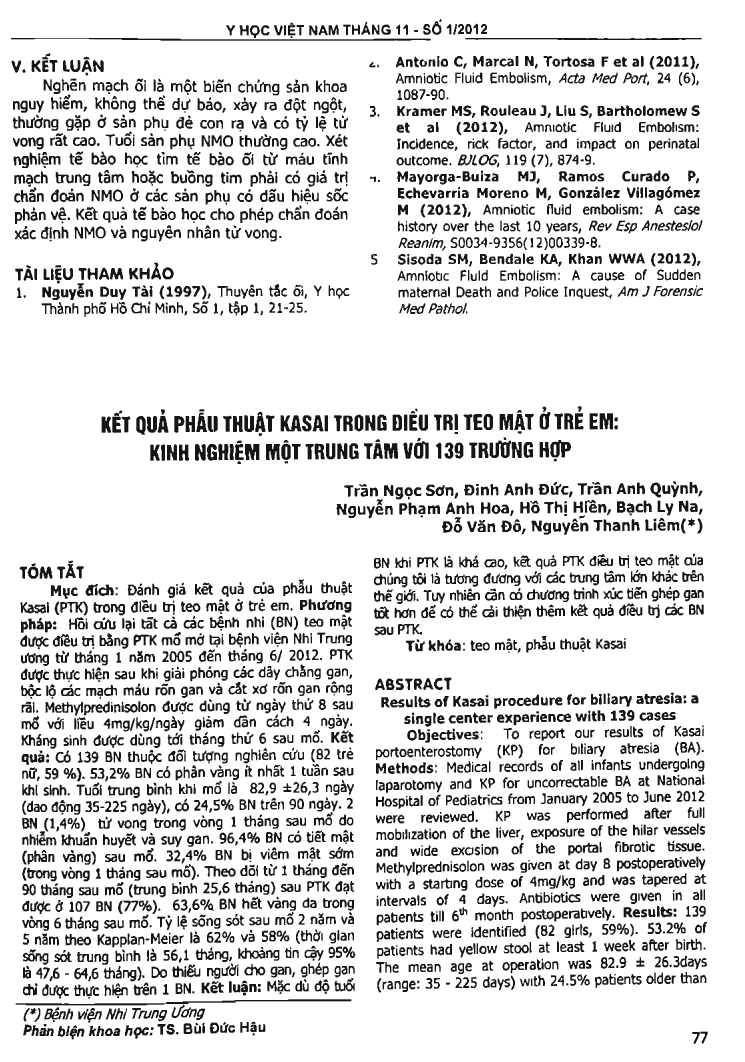
Objectives: To report on results of Kasai portoenterostomy (KP) for biliary atresia (SA). Methods: Medical records of all infants undergoing laparotomy and KP for uncorrectable SA at National Hospital of Pediatrics from January 2005 to June 2012 were reviewed. KP was performed after full mobilization of the liver, exposure of the hilar vessels and wide excision of the portal fibrotic tissue. Methylprednisolon was given at day 8 postoperatively with a starting dose of 4mg/kg and was tapered at intervals of 4 days. Antibiotics were given in all patients till 6th month postoperatively. Results: 139 patients were identified (82 girls, 59 percent). 53.2 percent of patients had yellow stool at least 1 week after birth. The mean age at operation was 82.9 + or - 26.3days (range: 35-225 days) with 24.5 percent patients older than 90 days. Two patients (1.4 percent) died within 1 month after KP due to sepsis and liver failure. Postoperative bile secretion (cholic stool) was noted in 134 patients (96.4 percent). Early postoperative cholangitis (up to 1 month after KP) was documented in 32.4 percent of patients. Follow-up 1 month to 90 months (mean 25.6 months) after KP was possible in 107 patients (77 percent). Within 6 months after KP, 63.6 percent were with normal bilirubin levels. The 2-year and 5-year cumulative survival rate with native liver after KP were 62 percent and 58 percent respectively (mean survival 56.1 months, 95 percent confidence interval 47.6 - 64.6 months). Because of donor shortage, liver transplantation after KP was performed in only one patient. Conclusions: Although the mean age of our patients at KP was older than that in most other large centers, our results of KP for biliary atresia were comparable to theirs. However, a better promoted liver transplantation program is needed to improve the outcome of our patients with BA.
- Đăng nhập để gửi ý kiến
